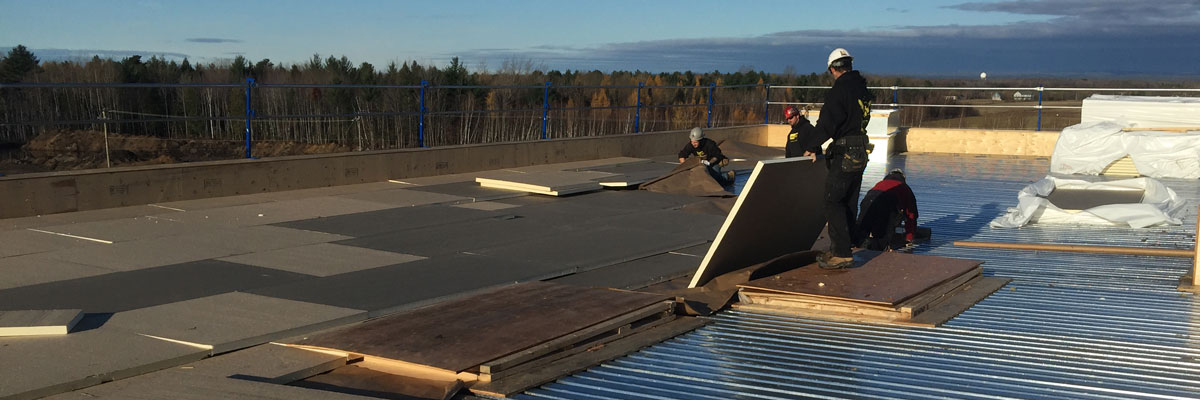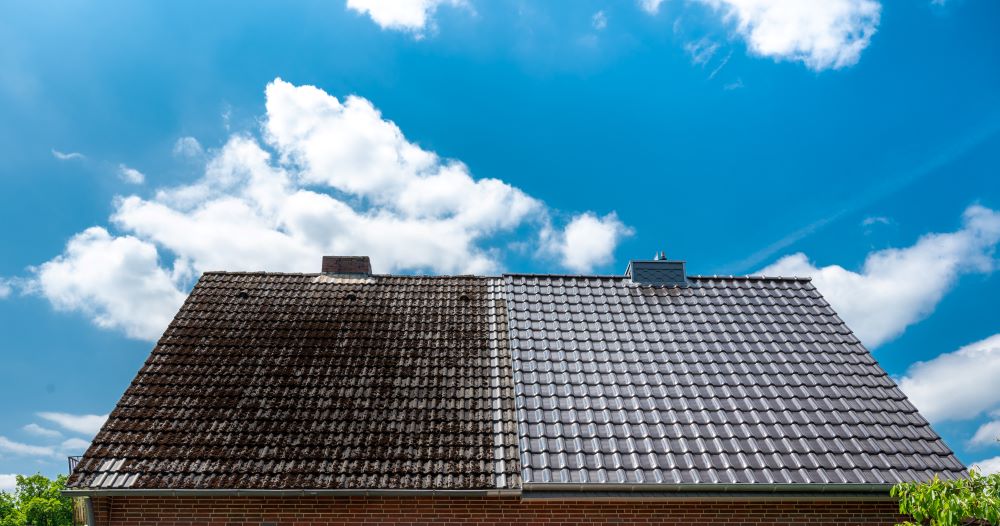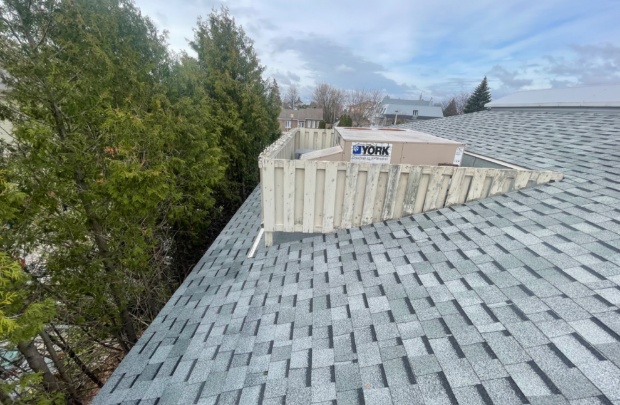As global temperatures continue to rise, urban areas are faced with an increasingly problematic issue: heat islands. These are areas where heat accumulates thanks to the dark, heat-absorbing surfaces of buildings and infrastructures, leading to higher temperatures in cities than in surrounding areas.
White roofs are an innovative solution to counter the harmful effects of urban heat islands. They are a promising alternative for cities that need to improve their resilience to the rising temperatures associated with climate change.
In this article, Montreal roofers explore the world of white roofs in detail, explaining what they are, how they work, and the materials used to build one.
What is a white roof?
White roofs are roofs covered in a pale coating, contrary to traditional roofs, which are generally dark. White roofs use special materials to reflect the sun’s radiation back into the atmosphere, so that the roof and building do not absorb as much heat.
How do white roofs work?
A white roof is covered with a reflective coating that is usually white or very pale. This special surface reflects a large proportion of the sun’s rays, reducing the amount of heat that is absorbed by the roof. As a result, the surface temperature of a white roof is significantly lower than that of a regular black roof, even on sunny days. By maintaining cooler temperatures, a white roof helps to mitigate the formation of urban heat islands and also improve indoor comfort.
What are white roofs made of?
A variety of materials can be used to create a white roof, each with its own durability, cost and level of reflectivity. These are a few common products used in the construction of white roofs:
- Reflective membranes: These PVC or EPDM rubber (ethylene propylene diene monomer rubber) membranes are specially designed to reflect solar radiation. They are applied to the existing roof surface.
- Reflective paints: Painting a roof with special reflective paint is an easy way to transform a regular roof into a white one.
- Reflective coatings: Special coatings made with reflective materials like ceramic or silica can be applied to the roof surface to enhance its solar reflectance.
White roof vs. black roof: what’s the difference?
Compared to regular black roofs, white roofs offer numerous ecological advantages. By reducing heat absorption, they help to lower the temperature of buildings and urban spaces, which minimizes the risk of creating urban heat islands. White roofs also reduce energy consumption levels related to air conditioning, helping to cut greenhouse gas emissions and protect the environment.
In addition, white roofs extend roof lifespan by reducing the wear and tear related to high temperatures, meaning fewer roof repairs and replacements are necessary. They also improve indoor comfort, providing a cooler environment in summer without high associated energy consumption.
What are the advantages of a white roof?
The benefits of white roofs go far beyond their ability to control the formation of heat islands. In fact, they are a high-performance, durable and environmentally friendly option.
Significant energy savings
When a roof absorbs the sun’s heat, that heat is transferred to the building via thermal conduction. This means that the temperature inside the building will be warmer, and more energy will be needed to cool the rooms.
By reflecting the sun, a white roof prevents heat from accumulating on the roof and creeping into the building’s structure. The building will stay cooler, which reduces the electricity costs associated with air conditioning. That’s why white roofs are synonymous with saving both energy and money!
Impressive lifespan
It’s important to remember that the main role of a roof is to protect a building from the elements. Fortunately, white roofs can do this effectively, and for a long time.
A white roof can protect roofing materials from repeatedly overheating from exposure to direct sun, thereby preventing related heat damage. In addition, the membrane used to cover white roofs remains highly flexible in winter, able to elongate over 300% in all directions even in temperatures as low as -40°C. It is also resistant to the wear and tear that can result in water infiltration.
Ideal for green roofs
Some white membranes are ideal for green roofs. Of course, you’ll need to check that the roof structure is sufficiently solid before installing a green roof, as it increases the roof’s load.
Reduced waste
Unlike many types of roof covering, some white roof membranes can be recycled.
And since white roof membranes are often more durable than asphalt and gravel membranes, they last longer and help reduce waste.
How much does a white roof cost?
Installing a white roof is an ecological and economical investment that offers long-term benefits. However, the initial cost can vary according to several key factors. These include:
- Roof area: The first factor affecting cost is the size of the surface to be covered. The larger the roof, the more material and time required.
- Type of material: The choice of material used for the reflective coating will impact the overall cost. Reflective membranes, special paints and reflective coatings have different levels of durability and the cost of purchase and installation will vary.
- Roof complexity: The architectural complexity of the roof can also influence cost. A pitched roof or an irregularly shaped roof will require the services of a certified roofer, which can increase the overall cost of the project.
- Accessibility: Roof access can also play a role in installation costs. A roof that’s difficult to access will require special equipment, and installation make take longer.
Although white roofs may represent a higher initial investment than black roofs, it’s important to consider the potential long-term savings and return on investment they offer.
Are white roofs the best solution for fighting urban heat islands?
Installing white roofs can greatly reduce urban heat islands. They are an excellent solution at a time when concern for the environment and individual well-being is sky-rocketing.
Some areas in large cities, including Montreal, are beginning to make white roofs mandatory on new flat-roofed buildings. While this type of roofing is not yet obligatory everywhere in the province or the country, white roofs are becoming a more popular choice all the time. Curious to learn more about white roofs and the other green roofing options that Duro-Toit offers? Looking for a quote for the cost of installing a white roof on your building? Contact our installation experts today!



